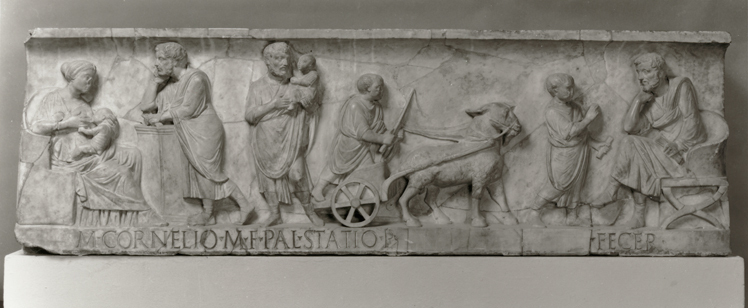M. Cornelius Statius

Annotation
Death is part of every society, but the rituals and objects surrounding death have varied across centuries and continents. They can often reveal many things about the role of children and families within a culture, from the nature of grieving to representations of childhood, from artistic preferences to child rearing norms. Dating from the first half of the 2nd century, CE, this Roman marble sarcophagus was an expensive funerary item created to commemorate the death of a young boy. The sarcophagus depicts a series of points in the life cycle of a child, from a newborn infant to a young child at play to an older child engaged in studies. The epitaph was dedicated by the boy's parents and the boy's name indicates that he was a freeborn Roman citizen.
This source is a part of the Roman Children’s Sarcophagi teaching module.
Credits
Sarcophagus of M. Cornelius Statius. Ostia, Hadrianic period. Louvre Museum, Paris. Photo © Réunion des Musées Nationaux / Art Resource, NY.